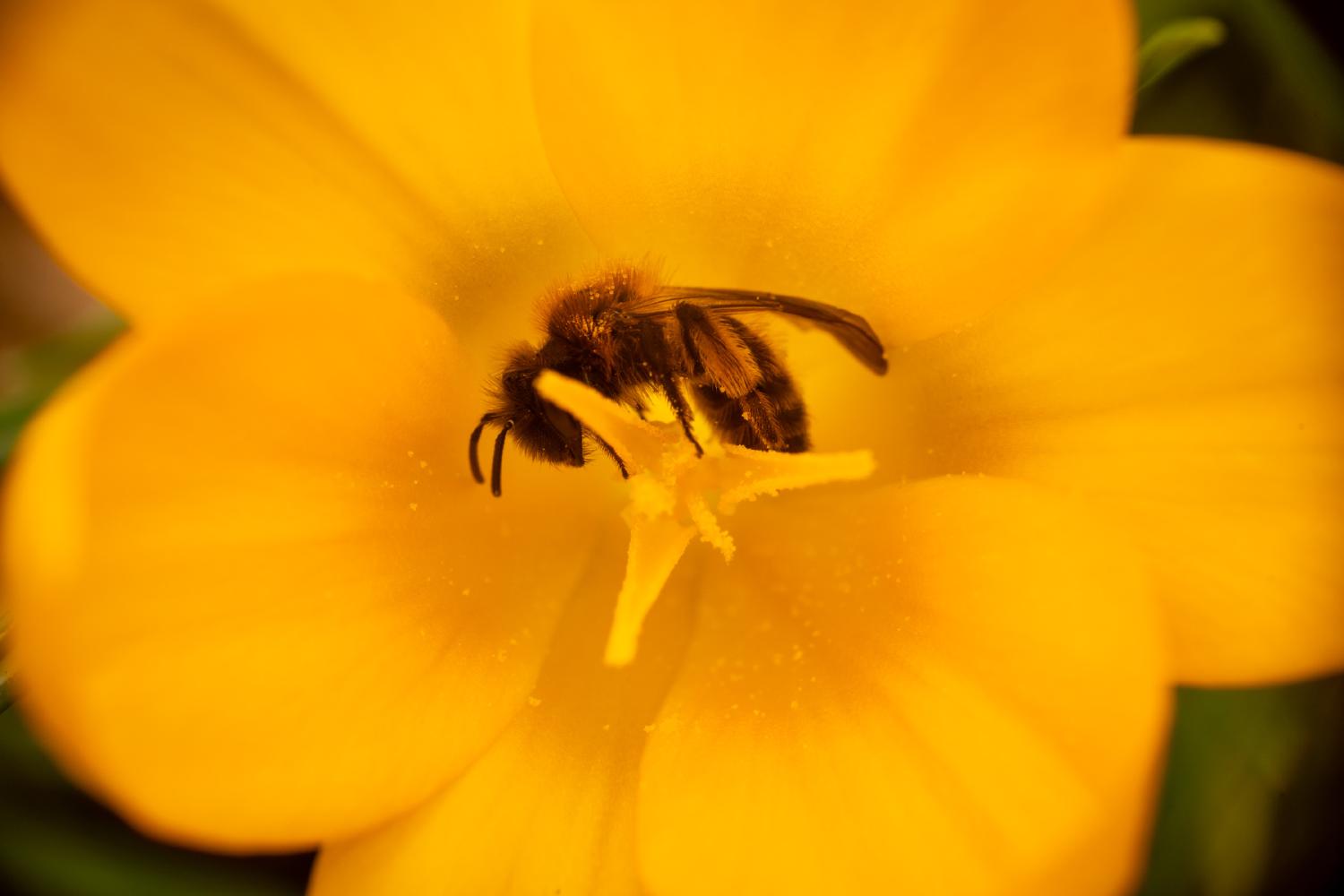Mining Bees
Lat. “Andrena“
genus
of epifamily
“Bees“
1 genus
Andrena bees are medium-sized with males being smaller and more slender than females, usually black with white to tan hair, and distinctive velvety areas on their faces called facial foveae. They are ground-nesting solitary bees that prefer sandy soils, creating burrows and provisions for their larvae without spinning cocoons. Andrena bees are active for a few weeks, have one generation per year, and are attacked by various insects. They are found in temperate regions of Europe, Asia, and North America, with some species in sub-Saharan Africa but none in South America, Australia, or Madagascar. Some species include Andrena cineraria in Europe and Andrena salicifloris in western North America.
Morphology
Andrena are generally medium-sized bees; body length ranges between 8 and 17 mm with males being smaller and more slender than females. Most are black with white to tan hair, and their wings have either two or three submarginal cells. They carry pollen mainly on femoral scopal hairs, but many Andrena have an additional propodeal corbicula for carrying some pollen on their thorax. They can be distinguished from other bees by the broad velvety areas in between the compound eyes and the antennal bases, called facial foveae. Some other genera in the family Andrenidae also have foveae though, so the best identifying feature unique to Andrena is the presence of a ring of hairs on the underside of their face called the “subgenal coronet”.
Life history
All Andrena are ground nesting, solitary bees. They seem to have a preference for sandy soils. The genus includes no parasitic or social species, though some nest communally or in aggregations. After mating, each female bee digs a burrow, collects pollen to form firm, round provisions for the larvae to eat and places them in cells lined with a shiny secretion. Larvae do not spin a cocoon and they overwinter as adults. They typically have one generation per year and adults are only active for a few weeks. Andrena nests are attacked by many other insects including brood parasitic bees, blister beetles, various parasitic flies, and Strepsiptera. Many Andrena are host-plant specialists, in which a species visits flowers of only a single or a few closely related plants. Oligolectic Andrena have specialized on many different plant groups and have morphological and behavioral adaptations that suit them for their pollen preference. For example, all members of the subgenus Callandrena specialize on pollen from the plant family Asteraceae and have highly branched, fluffy scopal hairs to hold aster pollen. According to Larkin et al. 2008, oligolecty was the basal trait for Andrena and a generalist diet has evolved multiple times across the genus.
Distribution
Andrena are common in temperate regions of Europe, Asia, and North America and most diverse in areas with a Mediterranean climate. A small amount of species are present in sub-Saharan Africa, and there are none in South America, Australia and nearby islands, or Madagascar.
Species
Partial list of species:
Andrena angustitarsata Andrena agilissima Andrena accepta †Andrena antoinei Michez & De Meulemeester, 2014, late Oligocene of France Andrena auricoma Andrena bicolor Western Palearctic Andrena carbonaria Andrena cineraria, Europe Andrena fulva, Europe Andrena ghisbaini, Europe (endemic to southern Spain) Andrena hattorfiana, Europe Andrena haemorrhoa, Europe Andrena lauracea, known only from 4 specimens in Texas and Illinois, in the central United States Andrena lagopus, Palearctic Andrena salicifloris, western North America Andrena milwaukeensis, United States and Southern Canada Andrena hadfieldi, Southwestern United States See comprehensive separate list.
External links
Bugguide.net Andrena, North American species only). Andrena miserabilis diagnostic photographs and information Andrena Identification Guide (female) Andrena Identification Guide (male) List of Species Worldwide Species Map
Ancestry Graph
Further Information
Copyright

This article uses material from the Wikipedia article Andrena the free encyclopedia Wikipedia which is released under Creative Commons Attribution-ShareAlike 4.0 International License). On Wikipedia a list of authors is available.
